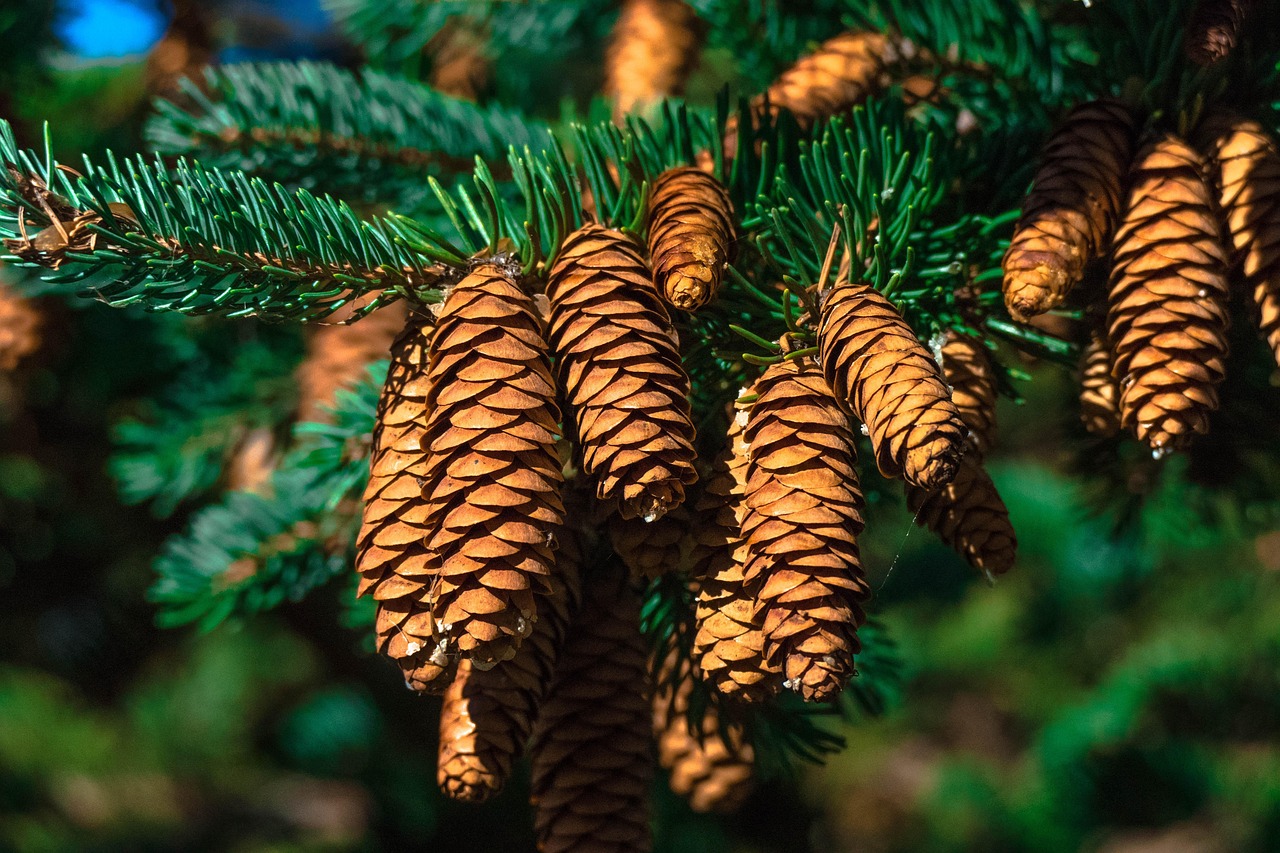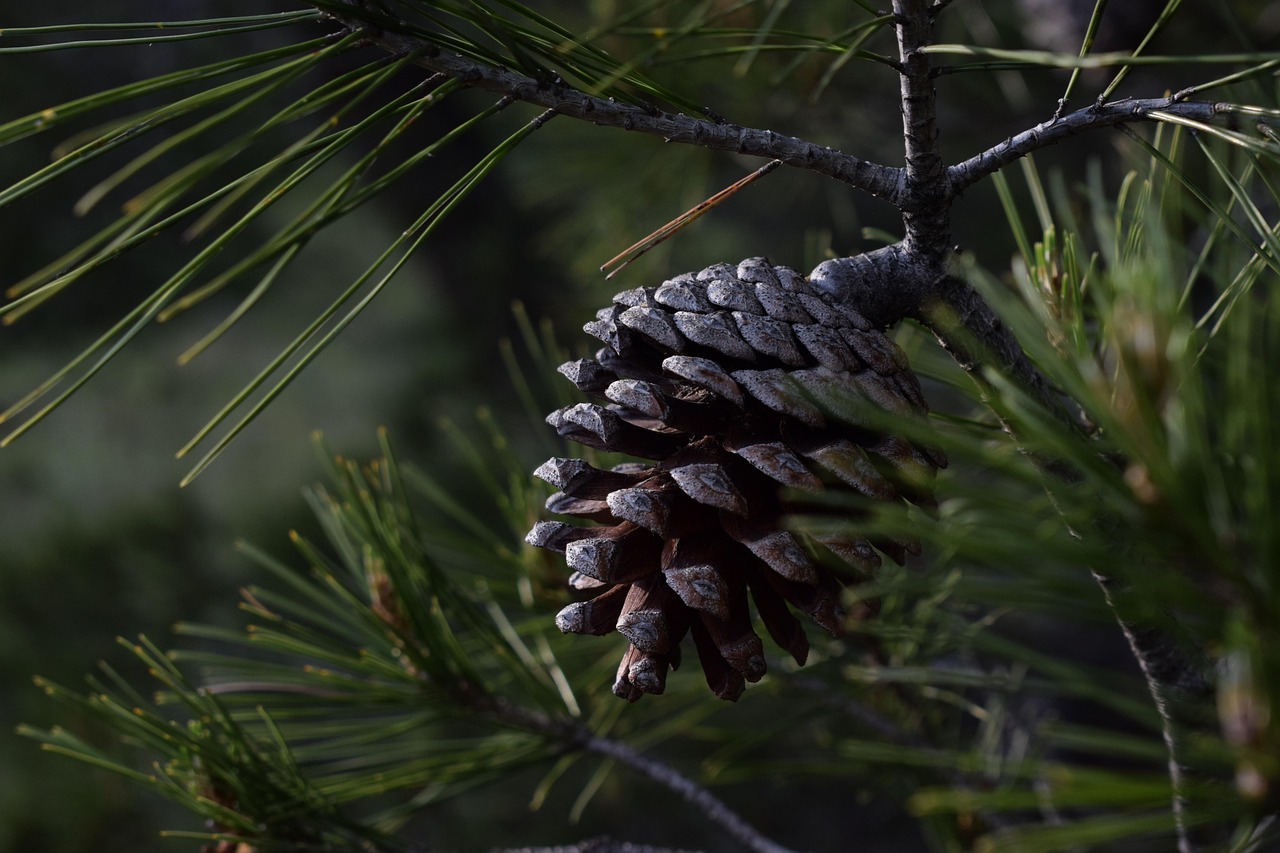Poplar and pine trees differ significantly in terms of appearance, growth habits, and uses. Poplars typically have broad, triangular leaves and grow rapidly, while pines feature needle-like leaves and a slower growth rate. Understanding these differences helps in identifying and utilizing these trees effectively.
The world of trees is vast and varied, with each species offering unique characteristics and advantages. Among the many tree types, poplar and pine stand out due to their prevalence and distinct features. These trees are commonly found in various environments worldwide, making them important for both ecological balance and human use. Knowing how to identify them and understanding their key differences can greatly benefit anyone interested in forestry, landscaping, or nature appreciation.
Poplar trees belong to the genus Populus and are known for their fast growth and tall stature. They are deciduous, meaning they shed their leaves annually. Poplar leaves are often broad and flat, providing a lush appearance during the growing season. Common species include the Eastern Cottonwood and Lombardy Poplar, which are popular in urban landscaping for their rapid growth and shade provision.
Pine trees, on the other hand, belong to the genus Pinus. They are coniferous, characterized by their needle-like leaves and woody cones. Pines are evergreen, retaining their foliage throughout the year. This feature makes them a preferred choice for winter landscapes and timber production. Some common species include Eastern White Pine and Ponderosa Pine, valued for their wood quality and aesthetic appeal.
Key Differences Between Poplar and Pine

When comparing poplar and pine trees, several key differences emerge. These differences not only help in identification but also determine their applications in various fields such as construction, furniture making, and landscaping.
| Feature | Poplar | Pine |
|---|---|---|
| Leaf Type | Broad and flat | Needle-like |
| Growth Rate | Fast | Moderate to slow |
| Type | Deciduous | Evergreen |
| Common Uses | Furniture, paper production | Construction, timber |
The visual differences between poplar and pine are often striking. While poplars can reach impressive heights quickly, pines tend to develop a more rugged appearance over time. The bark of poplars is generally smoother compared to the rough texture of pine bark. These characteristics not only aid in identification but also influence their roles in various ecosystems.
In addition to physical traits, the ecological roles of these trees differ significantly. Poplars tend to thrive in moist environments, often found near rivers and wetlands. They play a crucial role in stabilizing soil and preventing erosion. Pines, however, are more adaptable to a range of soil types and can tolerate drought conditions better than poplars.
Understanding these key differences enhances our ability to appreciate both tree types fully. Whether for practical purposes or simply enjoying nature’s beauty, recognizing the unique qualities of poplars and pines is beneficial.
Identification Characteristics of Poplar Trees
Identifying poplar trees involves examining various physical traits, including their leaves, bark, and growth patterns. These characteristics not only help in distinguishing poplars from other species but also provide insights into their ecological preferences.
Leaf Structure
The leaves of poplar trees are one of their most identifiable features. Typically, they are:
- Shape: Broad and triangular or heart-shaped, often with a pointed tip.
- Color: Bright green during the growing season, turning vibrant yellow in fall.
- Size: They can vary significantly, usually ranging from 2 to 6 inches in length.
Additionally, the underside of the leaves often has a lighter color, giving a striking contrast when the leaves flutter in the wind. This unique leaf structure is beneficial for photosynthesis and can be an important factor in identifying different poplar species.
Bark Texture
The bark of poplar trees also plays a crucial role in identification. Key features include:
- Young Bark: Smooth and greenish-brown, which later develops into a more textured surface.
- Older Bark: Generally becomes darker and more fissured as the tree matures.
This change in texture is noticeable and can help differentiate young poplars from other tree types. The smooth bark of younger trees can sometimes be mistaken for that of willows or other softwoods.
Identification Characteristics of Pine Trees
Pine trees have distinct features that set them apart from deciduous trees like poplars. Understanding these characteristics is essential for accurate identification.
Needle Classification
Pine trees are known for their needle-like leaves, which are typically grouped in clusters. Important aspects include:
- Needle Length: Varies by species, ranging from 1 to 12 inches long.
- Color: Needles can be dark green, blue-green, or yellow-green depending on the species.
- Cluster Arrangement: Needles grow in bundles called fascicles, usually containing 2 to 5 needles.
The arrangement and number of needles in each cluster are key identifiers for different pine species. For example, Eastern White Pine has five needles per fascicle, while Ponderosa Pine typically has three.
Bark Characteristics
The bark of pine trees exhibits a rugged texture that varies from smooth to deeply ridged. Key features include:
- Young Bark: Initially smooth and light-colored.
- Mature Bark: Becomes thick, rough, and often has a reddish-brown hue with deep furrows and plate-like scales.
This thick bark helps protect pine trees from fire and pests, an adaptation that contributes to their resilience in various environments.
Ecological and Practical Uses
Both poplar and pine trees serve significant roles in their ecosystems and provide practical benefits to humans. Understanding these uses enhances appreciation for these species.
Ecological Benefits
Poplars contribute to their ecosystems by:
- Erosion Control: Their extensive root systems help stabilize soil near water bodies.
- Wildlife Habitat: They provide food and shelter for various birds and small mammals.
Pines also play vital ecological roles, such as:
- Habitat Provision: They offer shelter for many bird species and insects.
- Carbon Sequestration: Pines absorb carbon dioxide, helping combat climate change.
Practical Applications
The wood from both types of trees is highly valued. Poplar wood is often used for:
- Furniture Making: It is lightweight and easy to work with.
- Paper Production: Its fibrous structure makes it suitable for papermaking.
Pine wood is equally versatile and is commonly used for:
- Construction: It is strong and durable, making it ideal for framing.
- Cabinetry: Its aesthetic appeal enhances home interiors.
Acknowledging these characteristics helps individuals appreciate the ecological importance and utility of both poplar and pine trees.
Growth Habits and Environmental Adaptations
Understanding the growth habits and environmental adaptations of poplar and pine trees is essential for recognizing their ecological niches. Both tree types have developed unique strategies to thrive in their respective habitats, which influences their distribution and usability.

Growth Patterns of Poplar Trees
Poplar trees exhibit rapid growth patterns, making them suitable for various applications, including landscaping and timber production. Key aspects include:
- Height Growth: Poplars can grow up to 50-100 feet tall within a relatively short span, often reaching maturity in just a few years.
- Growth Rate: They are among the fastest-growing hardwoods, capable of adding several feet in height each year under optimal conditions.
- Root System: Poplars have shallow but extensive roots that help them absorb moisture efficiently in saturated soils.
Their fast growth makes poplars ideal for reforestation projects and urban planting, where quick canopy coverage is desired. However, this rapid growth also means they may have a shorter lifespan compared to slower-growing tree species.
Growth Patterns of Pine Trees
Pine trees demonstrate a different growth strategy, often characterized by their longevity and resilience. Notable features include:
- Height Growth: Pines can reach heights of 50-200 feet, depending on the species, and typically take longer to mature compared to poplars.
- Growth Rate: While the initial growth may be slower, pines can continue to grow steadily for decades, making them long-term investments in forestry.
- Root System: Pines develop deep taproots that anchor them firmly in a variety of soil types, allowing them to access deeper water sources.
This adaptability enables pines to flourish in harsher environments, including sandy or rocky soils where other trees might struggle. Their resilience is one reason why pines are often used in reforestation efforts in challenging areas.
Preferred Growing Conditions

The ecological preferences of poplar and pine trees further distinguish them as they thrive in different conditions. Understanding these preferences aids in selecting the right tree for specific environments.
Poplar Growing Conditions
Poplar trees are best suited for moist, fertile soils. Essential growing conditions include:
- Soil Type: They prefer deep, well-drained soils rich in organic matter.
- Moisture Levels: Poplars thrive in areas with high moisture, such as riverbanks and wetlands.
- Sunlight: Full sun is ideal for optimal growth; they require at least six hours of direct sunlight each day.
Due to these conditions, poplars are often planted in flood-prone areas where they can help stabilize the soil while benefiting from the ample moisture.
Pine Growing Conditions
Pine trees display remarkable adaptability to various environmental conditions. Key factors include:
- Soil Type: They can grow in poor, sandy soils as well as richer loamy soils.
- Drought Resistance: Pines can tolerate dry conditions better than poplars due to their deep roots.
- Sunlight: Like poplars, pines also prefer full sun but can tolerate partial shade, especially when young.
This versatility allows pines to occupy a broader range of habitats compared to poplars, making them common in both temperate and subtropical regions.
Pests and Diseases
Both tree types face various pests and diseases that can affect their health and viability. Understanding these threats is crucial for successful cultivation and management.
Pests and Diseases of Poplar Trees
Poplar trees are susceptible to several pests and diseases, including:
- Caterpillars: Various species of caterpillars feed on the leaves, potentially defoliating the trees.
- Poplar Borer: This beetle larvae burrow into the wood, weakening the tree structure.
- Diseases: Fungal infections like leaf spot and cankers can significantly impair health.
Proper monitoring and management practices are essential for maintaining healthy poplar populations and minimizing damage from these threats.
Pests and Diseases of Pine Trees
Pine trees also encounter numerous challenges from pests and diseases, such as:
- Bark Beetles: These insects can infest weakened trees, leading to significant mortality rates.
- Pine Wilt Disease: Caused by nematodes, this disease can kill pine trees rapidly if not managed effectively.
- Diseases: Fungal pathogens can lead to root rot and needle blight, impacting tree vitality.
Integrated pest management strategies are often employed to mitigate these risks and ensure healthy growth in pine populations.
Comparative Uses in Landscaping and Industry

Both poplar and pine trees serve significant roles in landscaping and various industries. Understanding their unique applications can help individuals and businesses make informed decisions about which tree to plant or use for specific purposes.
Landscaping Applications
Poplar trees are often favored in landscaping for several reasons:
- Fast Growth: Their rapid growth enables them to provide shade quickly, making them ideal for parks and residential areas.
- Aesthetic Appeal: With their tall, straight trunks and lush foliage, poplars can enhance the visual appeal of landscapes.
- Windbreaks: Planting poplars in rows can create effective windbreaks, protecting gardens and homes from harsh winds.
Pine trees are also highly valued in landscaping, particularly for:
- Year-Round Foliage: As evergreens, pines maintain their needles throughout the year, providing greenery even in winter.
- Variety of Shapes: Pines come in various shapes and sizes, allowing for diverse landscaping designs.
- Wildlife Support: Pines offer habitats for birds and other wildlife, contributing to biodiversity.
Industrial Uses
The industrial applications of both tree types further emphasize their importance:
- Poplar Wood: Used extensively in the manufacture of furniture, cabinets, and plywood due to its lightweight and workable nature. Additionally, it is a preferred material for making paper products.
- Pine Wood: Valued for its strength and durability, pine wood is commonly utilized in construction, especially for framing and flooring. It is also used in making furniture, crates, and pallets.
Both types of wood can be treated to enhance their properties, such as resistance to moisture and pests, increasing their longevity in various applications.
Cultural Significance
Beyond their practical uses, poplar and pine trees carry cultural significance in many societies. They often symbolize different values and meanings.
Poplar Symbolism
Poplar trees are often associated with:
- Resilience: Their fast growth and ability to thrive in challenging conditions symbolize strength and endurance.
- Connection to Water: Frequently found near rivers, poplars are linked to themes of fluidity and change.
Pine Symbolism
Pine trees hold symbolic meanings such as:
- Eternal Life: As evergreens, pines symbolize longevity and eternal life across various cultures.
- Stability: Their deep roots and tall stature are often seen as representations of stability and resilience in adversity.
This cultural significance adds another layer of appreciation for these trees beyond their physical attributes and uses.
Final Thoughts
In summary, understanding the key differences between poplar and pine trees is essential for effective identification and appreciation of their ecological roles. Poplars are recognized for their rapid growth, broad leaves, and deciduous nature, while pines are known for their needle-like leaves, longevity, and adaptability to diverse environments. Both tree types offer significant ecological benefits, practical applications in industries such as construction and furniture-making, and cultural symbolism that enriches our connection to nature.
Whether you are considering planting a tree in your garden, aiming to enhance your landscape with beautiful foliage, or seeking suitable wood for a project, recognizing the unique qualities of poplar and pine can guide your choices. As both species continue to thrive in their respective niches, they serve as vital components of our ecosystems and cultural landscapes.
This comprehensive guide serves as a valuable resource for anyone interested in the fascinating world of trees. By understanding the distinctions between poplar and pine, we can cultivate a deeper appreciation for these remarkable species that contribute significantly to our environment and daily lives.
